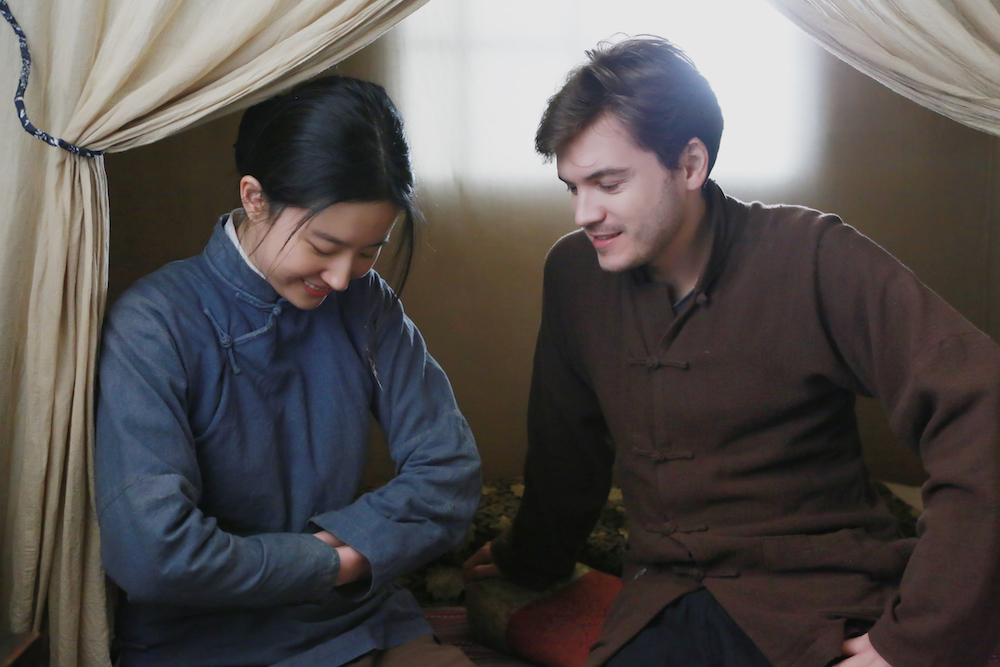Film Review: ‘In Harm’s Way’
By Andrew Barker
LOS ANGELES (Variety.com) – Before arriving at its current title, Danish director Bille August’s English-Mandarin WWII film “In Harm’s Way” was released in Britain as “The Hidden Soldier,” and premiered at 2017’s Shanghai Intl. Film Festival as “The Chinese Widow.” Why the film would reject two prosaic yet descriptive English-language titles for an equally prosaic yet randomly applied one — not to mention one that was already used for a 1965 John Wayne film set in the exact same time period and war theater — is a mystery.
It’s a tiny thing in the long run, as plenty of international co-productions go through multiple titles, but then, “In Harm’s Way” is ultimately an inoffensive, well-intentioned film derailed by a dozen little head-scratching decisions. Though toplined by Emile Hirsch, the film is more likely to draw attention for the presence of Chinese costar Liu Yifei (credited here as Crystal Liu), who is poised to become far more familiar Stateside when she stars in Disney’s live-action “Mulan” in 2020, and catching an early glimpse of the star is really the only compelling reason to give this film a look.
At the heart of “In Harm’s Way” is a generally competent if thoroughly predictable heartstrings-tugger in which a wounded U.S. pilot named Jack (Hirsch) is nursed back to health by a widowed Chinese villager named Ying (Liu) while Japanese troops close in. Unfortunately, in order to get there, the film must first send Jack on a daring bombing run over Tokyo that ends with a crash landing in China’s Zhejiang province. These aerial combat sequences take place alternately in washed-out tones with truly horrid vfx, then later in near darkness. The decision to begin the film with such clumsy and credulity-straining scenes is baffling, because the precise specifics of Jack’s mission bear little relevance to the rest of the story, and surely a director as experienced as August could have devised a way to elide the aerial action setpieces that he lacked the resources to believably stage.
The film is on steadier ground, both narratively and aesthetically, when it returns to earth, with d.p. Filip Zumbrunn opting for more naturalistic tones to depict the lush, idyllic village where Ying crosses paths with the marooned pilot. A war widow, Ying lives in the outskirts of town with her sassy daughter Nunu (Fangcong Li), raising silkworms to support her family. When she and Nunu discover Jack hanging from the trees by his parachute, his leg badly wounded, they first stash him in a cave, then move him to a hidden basement beneath Ying’s house.
Bit by bit, Ying and Jack start to find ways to communicate – though both spend entirely too long simply yelling at each other in languages the other clearly doesn’t understand – and it will come as little surprise that some (very chaste) romantic stirrings begin to percolate. Nunu is far more wary of the smelly, poorly groomed interloper crashing in the basement, however, and Ying worries that her daughter might somehow betray his presence to rest of the village. There is, after all, what appears to be an entire Japanese battalion camped out within shouting distance of their house, led by the sadistic captain Shimamoto (a cartoonishly bug-eyed, mustache-twirling Tsukagoshi Hirotaka) who seems to have eyes for Ying.
The film is clearly Liu’s to carry, and she does so as well as circumstances allow, with Hirsch playing Jack as a rather undistinguished amalgam of G.I. clichés. Neither are particularly well-served by the film’s herky-jerky editing, however, nor the pileup of bookends (a debriefing in a military hospital, an ode to the heroism of Chinese resistance fighters) which start to crowd out the simple, agreeable story that should be its center. In the end, “In Harm’s Way” struggles to please so many theoretical audiences that it winds up feeling like a film for no one at all.

